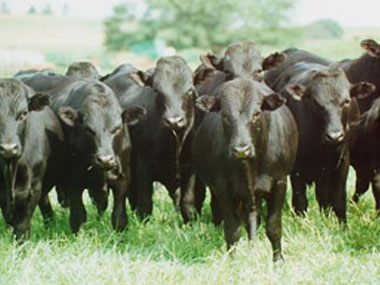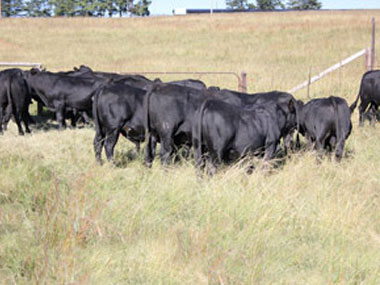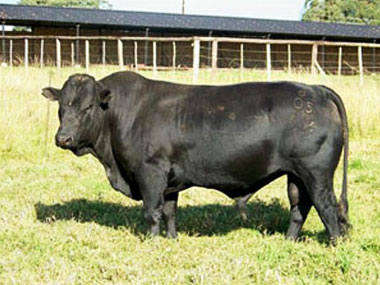The stud remained a closed one for the first 25 years of its existence, during which period, line breeding was stringently applied. Cows indicating that they adapted exceptionally well to the environment were used as female lines, while particular emphasis in bulls was placed on their muscular development.
At the same time maximum use was made of the most outstanding bulls (for eight years on average). This resulted in a very good retention figure in respect of the female animals, which retention formed the basis of exceptionally strong prepotency. This characteristic of the stud is well known throughout the country today.
Inevitably this approach brought about a reasonably high inbreeding coefficient. This was however countered by bringing back the best half-bred Buffalo Valley bulls available, into the stud. This strategy was very successful. Thus once again the stud has now been restored to pure Buffalo Valley bloodlines.



Buffalo Valley animals are known for their medium-frame size and for early maturity with abundant muscling. The animals are also exceptionally well adapted, as indicated by the average inter-calving period of less than 400 days over the last several years. This was achieved in a cow herd of 200 kept in sourveld conditions.
Die Buffalo Valley vroulike diere is alombekend as die ideale veld aangepaste moederlyn binne Drakensberger geledere. Aanpasbaarheid word weerspieël in die vermoë van die dier om te produseer en reproduseer vanaf die natuurlike veld sonder daadwerklike hoë addisionele inset kostes, m.a.w. om goedkoop rooivleis te produseer.
Die Buffalo Valley Moederlyn is dan reeds sedert sy ontstaan in 1968 baie spesifiek vir hierdie ekonomies belangrike eienskap geteel en op streng wetenskaplike grond geselekteer. ’n Goed aangepaste en hoogs vrugbare dier se raamgrootte wissel vanaf medium klein tot medium groot. Dit is soos hierbo vermeld, die tipe wat by uitstek in die Buffalo Valley kudde ontwikkel is weens die feit dat alle vroulike diere hoofsaaklik op die veld aangewese was om te kan produseer en reproduseer. Die groter tipe raamwerk diere het dan op grond van hierdie eienskappe, hulself uit die BV kudde geselekteer het.
Produksie behels ook onder andere, die persentasie mortaliteit tot op speen ouderdom. In ’n NIVS (Vandag bekend as die LNR) ondersoek in 1968, het Danie Bosman bepaal dat die Drakensberger die laagste mortaliteit gehad het (3.22 %), teenoor die gemiddeld van 6.16 % van nege (9) ander rasse. Ons is trots om te kan sê dat die BV mortaliteit laer as die ras gemiddelde is.
Needless to say, one of the greatest influences exerted by Buffalo Valley bulls on other pure-bred herds is their tendency to trim down the size of the cows, but at the same time broaden their conformation, thus making them more functionally efficient without reducing their weight. This is reflected by the average length relationship of 19% more than height in Buffalo Valley bulls in Phase C growth tests.
Buffalo Valley het nie alleen ’n Moederlyn nie, maar ook ’n Vaderlyn. Om in ons doelstellings te slaag om aan alle kopers se behoeftes te voorsien, het Buffalo Valley dan ook twee bloedlyne ontwikkel, tw.
Against the background of the Buffalo Valley breeding policy in respect of growth, carcass characteristics and quality, fertility and retention, the performance of this stud is actually measured in red by the extent in which the characteristics of Buffalo Valley blood are transferred to other herds. Moreover, a large part of the recorded performance data of the herds emanate from the progeny of Buffalo Valley animals. The Buffalo Valley philosophy places emphasis on adaptability and hardiness - the material that formed the basic development of the breed. In an inhospitable environment for cattle farming on natural veld grazing, only hardy animals which have adapted well to extremely difficult conditions can achieve outstanding performance.